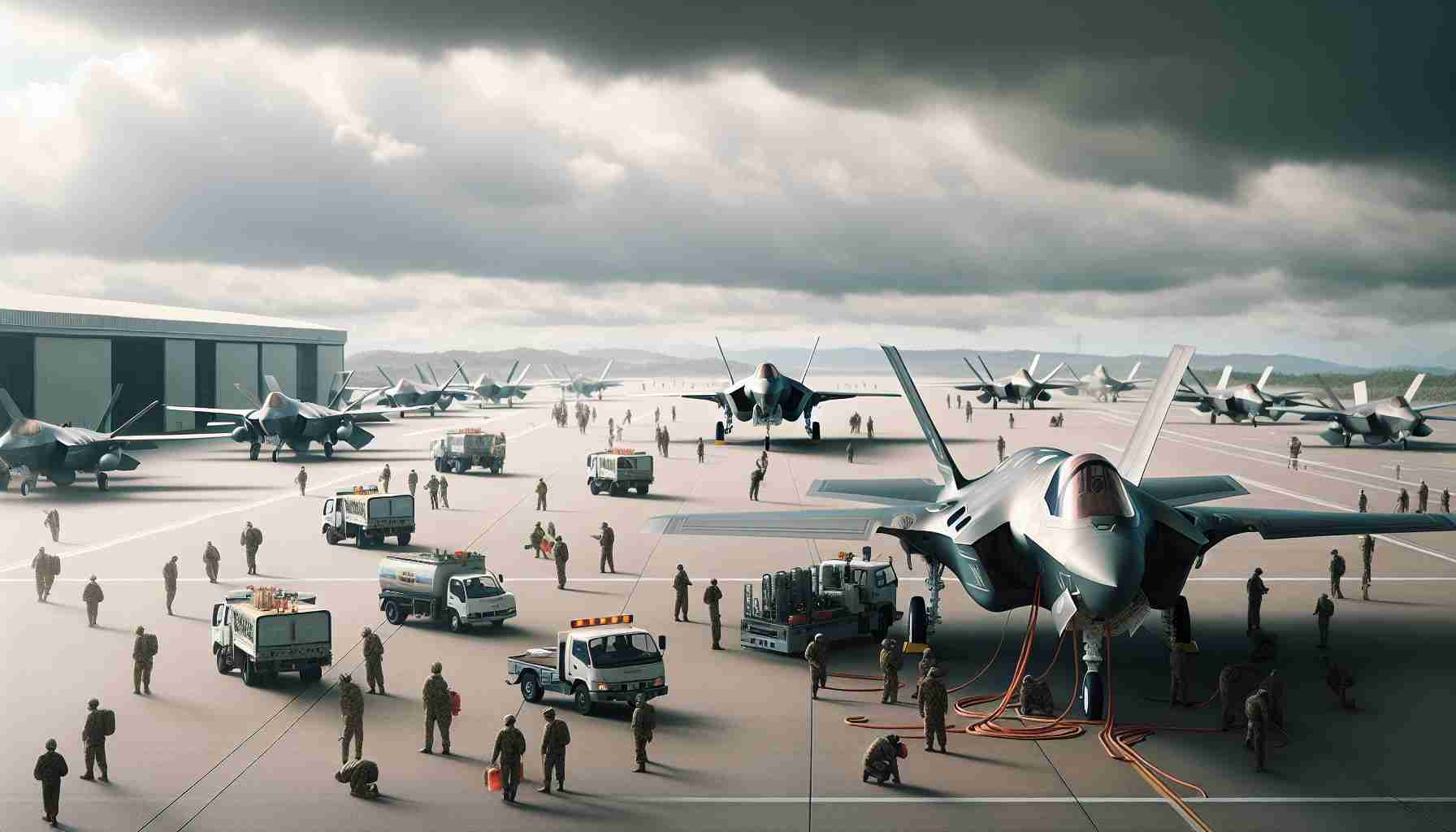- Two U.S. Air Force F-35 fighter jets made an emergency landing in Japan due to an unexpected runway blockage.
- The incident caused significant disruptions to airport operations and delays for commercial flights.
- Military readiness is under scrutiny due to high operational costs and maintenance issues, particularly for the F-35 program.
- Refueling was conducted at multiple locations, showcasing the need for adaptability during military operations.
- The incident underscores ongoing concerns about the safety and sustainability of advanced military aircraft.
In a stunning turn of events, two U.S. Air Force F-35 fighter jets were forced to make an emergency landing at Matsuyama Airport on Japan’s Shikoku Island, highlighting the unpredictable nature of military operations. The unexpected diversion disrupted airport activity, causing delays for a commercial flight arriving from Osaka.
The drama unfolded when a U.S. Navy E/A-18G Growler encountered an emergency, blocking the runway at the Marine Corps Air Station Iwakuni for over half an hour. This unforeseen hiccup left several military aircraft, including the F-35s, in need of refueling, forcing them to seek alternative landing sites.
Refueling took place not only at Matsuyama but also at the Nyutabaru Air Base in Miyazaki Prefecture on Kyushu Island. While there were no reported injuries from this incident, the heightened alertness surrounding military operations remains a critical focus. This comes on the heels of a prior incident where an F-35 crash occurred at an Alaskan base, raising concerns about the sustainability and operational effectiveness of this costly fighter jet program.
The U.S. Department of Defense has reported staggering maintenance expenses for the F-35, averaging around $6.6 million per aircraft annually—an alarming increase beyond initial budget estimates. As military readiness continues to be challenged by operational complexities and rising costs, this incident serves as a pivotal reminder of the unpredictable and costly nature of modern warfare.
Emergency Landing Shakes Up Military Readiness: Key Insights on F-35 Operations
Unpredictability in Military Operations
Recently, two U.S. Air Force F-35 fighter jets were forced into an emergency landing at Matsuyama Airport in Japan, due to an unexpected incident with a U.S. Navy E/A-18G Growler that blocked the runway at Marine Corps Air Station Iwakuni. This incident disrupted airport operations significantly, causing delays for civilian flights and raising broader concerns regarding military operational efficiency.
Impact on Flight Operations and Emergency Protocols
As the incident highlights, military operations can be significantly affected by unforeseen circumstances. This event not only required the F-35s to be diverted to Matsuyama Airport for refueling but also utilized Nyutabaru Air Base as an additional refueling point. The implications are profound, considering the complex logistics entailed in modern military operations.
# Key Trends and Insights
1. Rising Operational Costs: The F-35 program is facing skyrocketing maintenance costs, averaging $6.6 million per aircraft annually, which is leading to severe budget strains and resource allocation issues within the U.S. Department of Defense.
2. Concerns About Military Readiness: This incident and others like it cast doubt on the ability of military forces to respond effectively in high-pressure situations. It underscores the need for improved training, emergency readiness, and responsiveness to operational challenges.
3. Sustainability of the F-35 Program: Following several incidents, including a previous crash in Alaska, there are increasing calls for reassessment of the F-35 program’s sustainability and effectiveness.
Frequently Asked Questions
1. What are the key operational limitations of the F-35 jets?
The F-35 jets face issues such as high maintenance costs, limitations in stealth capabilities under certain operational conditions, and reliability concerns that have been revealed during various training and combat scenarios. The inability to quickly adapt to emergency situations poses additional risks.
2. How does the U.S. military handle emergency landings?
The U.S. military follows strict protocols, which include diverting aircraft to the nearest suitable airport, coordinating with local air traffic control, and ensuring safety for both military and civilian operations. Refueling in alternate locations like Matsuyama and Nyutabaru is part of these protocols.
3. What are the future implications for military funding due to incidents like these?
Continued incidents and rising maintenance costs may lead to calls for budget reevaluations, potential cuts in personnel or other military programs, and an increased focus on developing alternative, more cost-effective military technologies.
Related Links
– Department of Defense
– U.S. Air Force
– Military.com
In summary, the emergency landing of F-35 jets in Japan highlights the unpredictable nature of military operations and underscores the ongoing challenges within the F-35 program. These incidents call for continuous evaluation of military strategies and operational capabilities in the face of rising costs and logistical complexities.
